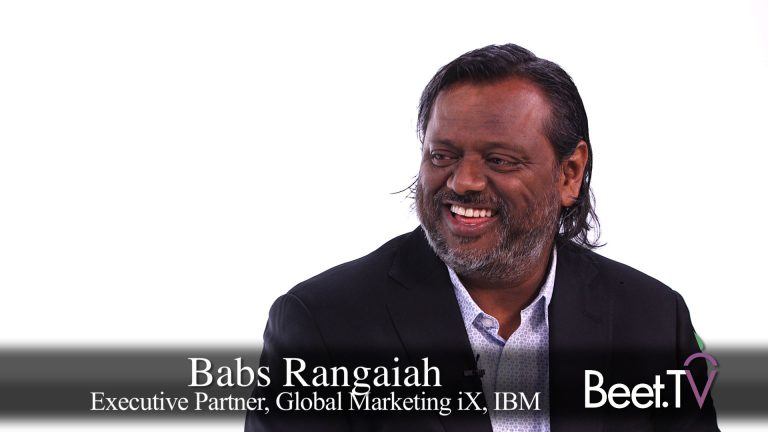
Blockchain is still early in its life cycle of development – but could soon help advertisers and others track the provenance and history of what they buy.
That is the new idea bubbling in some sections of ad-land, as technology companies look for ways to take the new infrastructure to new customer categories beside crypto-currency.
For the uninitiated, a blockchain is a public, distributed, anonymised ledger of transactions that is supremely trackable and traceable. It is the technology that underpins digital currencies like Bitcoin – but, in theory, those “transactions” don’t have to be monetary.
Over the last year, businesses of all kinds have explored the potential it offers to record every action and modification in a distributed ledger. So far, much of the talk still seems just that – hypothetical.
But, in this fireside chat with Rob Norman, Babs Rangaiah, the global marketing executive partner at IBM iX, the division working on blockchain solutions, offers up some concrete examples of how blockchain has real-world solutions – and could help bring transparency to the digital ad supply-chain.
Rangaiah says IBM iX is helping Walmart track and log the supply chain for pork produce in Chinese supermarkets, and also to ensure that mangos imported from Central America all go through a tracked and traced system, so that any health outbreaks can be traced to a specific batch.
Pork and mangos are all well and good. But what do meat and fruit mean for ad-tech?
For advertising buyers and sellers, who, over the last couple of years, have been plagued by the creeping realisation that much of their money is siphoned off by intermediary platforms without full disclosure, that could be mana from heaven. Blockchain could shine a spotlight on every fraction of a cent that might be taken by links in the chain.
That’s the theory. What’s the practice?
“We did a blockchain for media with Unilever earlier in the year,” Rangaiah adds. “We were literally tracking the ads because of all the different players in the programmatic mix now, and to understand where that money goes.
“If there’s a dollar leaving the market, it used to be 85 cents, it gets to the publisher, and now it’s 30 cents. Where is all that money going? So it’s total transparency to the chain. Nobody understands … how much money is going to each piece.”
IBM’s Rangaiah says blockchain can help in three key respects:
- “What blockchain will provide is very clear transparency of that.”
- “It will also provide a great way to clean up all the discrepancies that occur because of it.”
- “It gives, from a reporting standpoint, a dashboard that makes it very easy to track where you’re spending your money.”
How this all gets implemented is, to many, still a source of confusion. Interviewing Rangaiah for Beet.TV, Rob Norman, until recently the chief digital officer at Group M, the world’s biggest media agency, repeats one description of blockchain as “everything you don’t understand about finance, and everything you don’t understand about computers combined”.
For IBM’s part, it uses Hyperledger Fabric, an open-source blockchain-regulating technology that it helped contribute to the developer community, as an enterprise infrastructure, though specific industries then need unique applications built on top.
Rangaiah acknowledges: “It is very, very early. I think the potential is huge. So far, what we’ve done is worked on a direct type of buy. We’re now working on something that scales that, which will be more programatically based. It still won’t handle the number of transactions and volume that (happen) when you talk about very high speed.”
This video was produced at the Beet Retreat in City & Town Hall on June 6, 2018 in New York City. The event and video series are presented by LiveRamp, TiVo, true[X] and 605. For more videos from the series, please visit this page.